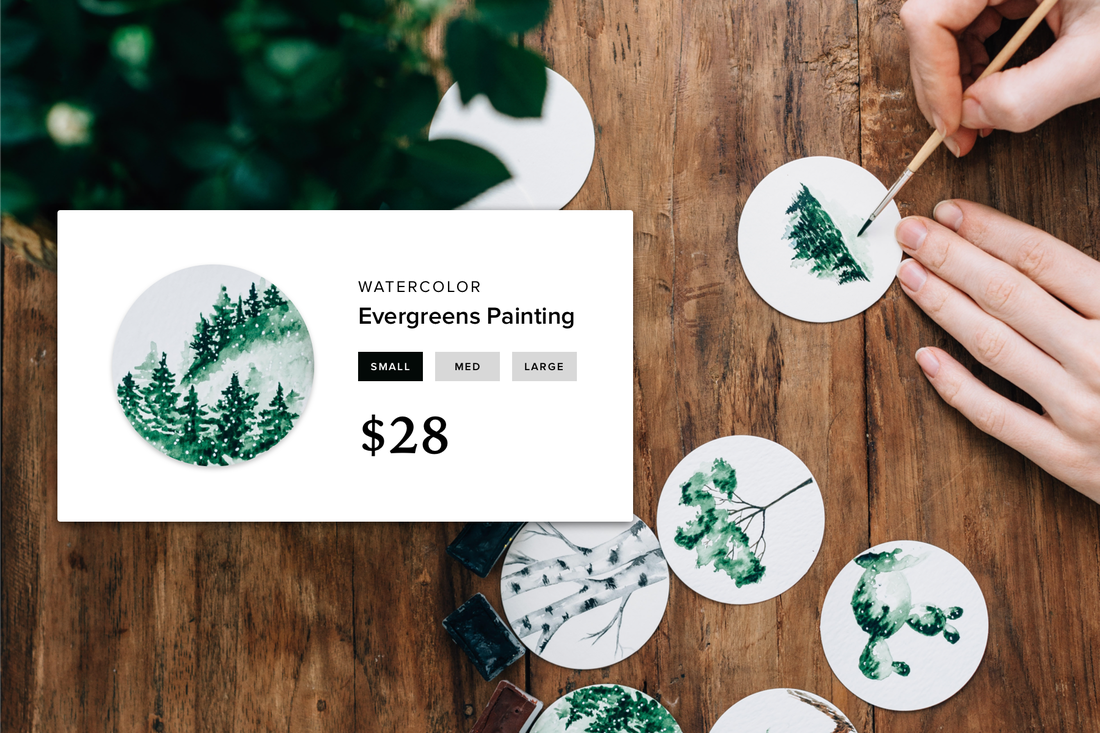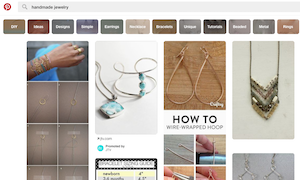With the online marketing scene changing so fast, new strategies and marketing fads pop up all the time and get a lot of press. The hard part for you, as a small business owner, is to figure out which strategies are fads and which are fabulous marketing techniques that might actually help your business. Infographics, Pinterest posting, and Google product listings are three hot and much discussed marketing tactics. We’ll take a look at each and determine whether they are something your business should try out.
1. Infographics - Fad
Cost: $500-$2000 (For a Professional Quality Infographic)
Infographics are essentially visual depictions of complicated information. The goal is to present complex information quicker and more effectively in a visual way. The way infographic marketing works, is that a business will create a unique infographic, convince some popular site to post it, and then hopefully drive traffic back to their website/business.
There are two main reasons infographics are so popular. First, they present information in a way that caters to today’s increasingly visual customer. Second, with it getting harder and harder to rank well in Google search, infographics can provide another way to get links for your site that help you rank higher.
Why Infographics are a Fad
By saying infographics are a fad, we are not necessarily saying they are going to go away. We are just saying that their level of hype and popularity is disproportionate to how useful/effective they actually are, especially for small business owners. There are three main reasons/problems associated with small businesses’ using infographics.
2. Pinterest Posting - Fabulous (For the Right Businesses)
Cost: Free to Post - (Third-Party Pinterest marketing service fees vary)
Essentially, Pinterest is an image/picture organizing and sharing tool, allowing users to create an account, upload/share original images, share other user images, and more. The potential is massive. If your image/pin goes viral, you could have tens of thousands of views in no-time. Pins are generally linked to third-party websites and are used to drive traffic to specific pages/products.
Pinterest needs to make sense for your business. For example, if your business sells visually stunning handmade items tailored towards wealthy women, Pinterest is a no-brainer. But, if you are a home medical supply provider who tailors to 65 year old + individuals, most of your customers probably are not using Pinterest. You also have to have the time. To be successful on Pinterest, you need to be consistently managing/adding content, probably at least several times a week, which is too much of a time commitment for some businesses.
Why Pinterest Posting is Fabulous (For the Right Business)
If your business meets the qualifications above, Pinterest is great. First of all, it’s free. Unless you hire a third-party marketing service to manage your content, you don’t have to pay a dime, which small business owners love to hear. Second, it has a huge reach. Although Pinterest’s user numbers are not public, but most traffic estimates agree that there are at least 40 million active monthly users.
However, Pinterest should not be a small businesses first major social media effort. The first stop should be Facebook. Here are some great articles on using Facebook for marketing.
3. Google Product Listing Ads - Fad (See exceptions below)
Cost Per Click: $1.50ish
When you do a search for something on Google, there are a whole set of ads that pop up on the top right-hand side of the page with images and prices. These are Google’s Product Listing Ads (PLAs), which are paid advertisements bought by businesses. Google’s PLAs are effective, having some of the highest customer click-through rates of any online ad options, at around 3.4%. However, before you get too excited about Google Ads, there are several important things to know.
Why Google PLAs are a Fad for the Average Small Business
With Google PLAs averaging around $1.50 per click in cost and a conversion rate of 3.4% percent, you will have to pay roughly $30 to get one paying customer (not to mention photography costs). For bigger businesses that have large margins and a huge advertising budget, this can be worth it. But, for smaller businesses, it will be struggle to make PLAs profitable. If your business sells mainstream products carried by many larger retail chains (general clothing, lighting, furniture, etc), things get even rougher. Larger chains can afford to charge significantly lower prices because they buy in bulk, and you will not be able to compete.
With the above being said, there are some exceptions. If you have a new beard-oil line and have some great images of burly men with glistening facial hair, your product might be unique enough that buying PLAs would be worth it. The odds of you having a better listing than your competition are much higher with unique products, simply because fewer businesses will have/sell them. Do a Google search with your product keywords and see what PLAs come up on the sides. If there are no major retailers listed and the PLAs are not that visually exciting, it might be worth you giving it a whirl. But, if the listings are professional and have big name retail chains behind them, it’s probably better to spend your money elsewhere.
Cost: $500-$2000 (For a Professional Quality Infographic)
Infographics are essentially visual depictions of complicated information. The goal is to present complex information quicker and more effectively in a visual way. The way infographic marketing works, is that a business will create a unique infographic, convince some popular site to post it, and then hopefully drive traffic back to their website/business.
There are two main reasons infographics are so popular. First, they present information in a way that caters to today’s increasingly visual customer. Second, with it getting harder and harder to rank well in Google search, infographics can provide another way to get links for your site that help you rank higher.
Why Infographics are a Fad
By saying infographics are a fad, we are not necessarily saying they are going to go away. We are just saying that their level of hype and popularity is disproportionate to how useful/effective they actually are, especially for small business owners. There are three main reasons/problems associated with small businesses’ using infographics.
- They are expensive and time consuming: For a small business marketing budget, $500-$1000 is a fair chunk of change. For comparison, that could get you somewhere between 750-2000 clicks viaFacebook Ads. Once you factor in the time it takes to actually collect and organize interesting and unique data, infographics are really quite a costly endeavor for small businesses.
- If you try to use a cheap DIY infographic builder, your quality will suffer: Although it is tempting to use a DIY builder to make infographics on the cheap, the reality is that your best route for marketing infographics is to convince other sites to post them. If your quality is not up to par, you won’t get any links.
- Finding quality sites to post your infographic is getting harder and harder: Getting good third-party sites to post your infographic is a tough business. This is especially true for small businesses, who have to compete against larger businesses who have more time, money, and resources to spend on their infographics. All in all, your businesses’ time and money is probably spent better elsewhere.
2. Pinterest Posting - Fabulous (For the Right Businesses)
Cost: Free to Post - (Third-Party Pinterest marketing service fees vary)
Essentially, Pinterest is an image/picture organizing and sharing tool, allowing users to create an account, upload/share original images, share other user images, and more. The potential is massive. If your image/pin goes viral, you could have tens of thousands of views in no-time. Pins are generally linked to third-party websites and are used to drive traffic to specific pages/products.
Pinterest needs to make sense for your business. For example, if your business sells visually stunning handmade items tailored towards wealthy women, Pinterest is a no-brainer. But, if you are a home medical supply provider who tailors to 65 year old + individuals, most of your customers probably are not using Pinterest. You also have to have the time. To be successful on Pinterest, you need to be consistently managing/adding content, probably at least several times a week, which is too much of a time commitment for some businesses.
Why Pinterest Posting is Fabulous (For the Right Business)
If your business meets the qualifications above, Pinterest is great. First of all, it’s free. Unless you hire a third-party marketing service to manage your content, you don’t have to pay a dime, which small business owners love to hear. Second, it has a huge reach. Although Pinterest’s user numbers are not public, but most traffic estimates agree that there are at least 40 million active monthly users.
However, Pinterest should not be a small businesses first major social media effort. The first stop should be Facebook. Here are some great articles on using Facebook for marketing.
3. Google Product Listing Ads - Fad (See exceptions below)
Cost Per Click: $1.50ish
When you do a search for something on Google, there are a whole set of ads that pop up on the top right-hand side of the page with images and prices. These are Google’s Product Listing Ads (PLAs), which are paid advertisements bought by businesses. Google’s PLAs are effective, having some of the highest customer click-through rates of any online ad options, at around 3.4%. However, before you get too excited about Google Ads, there are several important things to know.
- Google PLAs are most effective for larger businesses (Walmart, Target, Williams and Sonoma, etc)
- Google PLAs are geared toward retail businesses (not really geared toward service/consulting businesses)
- Your products must be visually compelling for PLAs to be successful (professional quality pictures are crucial)
Why Google PLAs are a Fad for the Average Small Business
With Google PLAs averaging around $1.50 per click in cost and a conversion rate of 3.4% percent, you will have to pay roughly $30 to get one paying customer (not to mention photography costs). For bigger businesses that have large margins and a huge advertising budget, this can be worth it. But, for smaller businesses, it will be struggle to make PLAs profitable. If your business sells mainstream products carried by many larger retail chains (general clothing, lighting, furniture, etc), things get even rougher. Larger chains can afford to charge significantly lower prices because they buy in bulk, and you will not be able to compete.
With the above being said, there are some exceptions. If you have a new beard-oil line and have some great images of burly men with glistening facial hair, your product might be unique enough that buying PLAs would be worth it. The odds of you having a better listing than your competition are much higher with unique products, simply because fewer businesses will have/sell them. Do a Google search with your product keywords and see what PLAs come up on the sides. If there are no major retailers listed and the PLAs are not that visually exciting, it might be worth you giving it a whirl. But, if the listings are professional and have big name retail chains behind them, it’s probably better to spend your money elsewhere.






